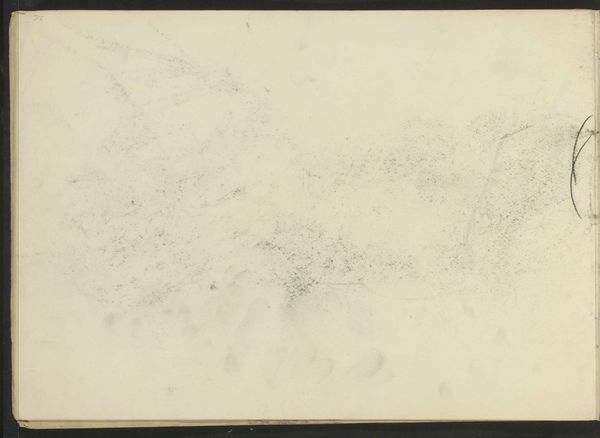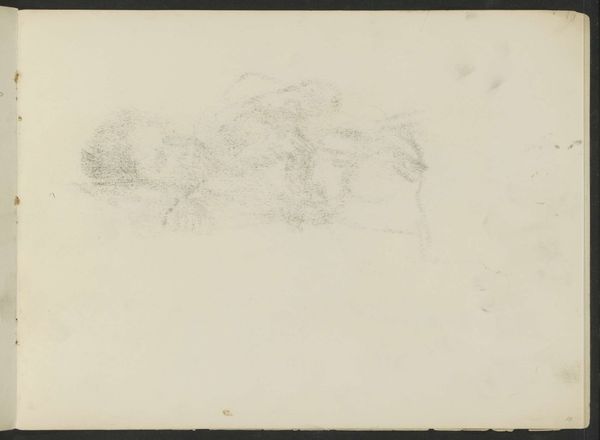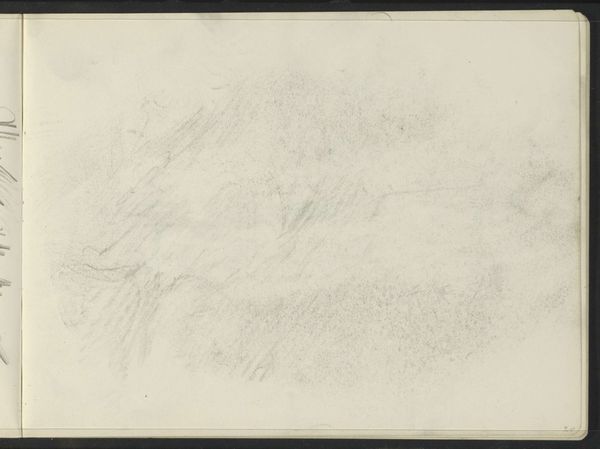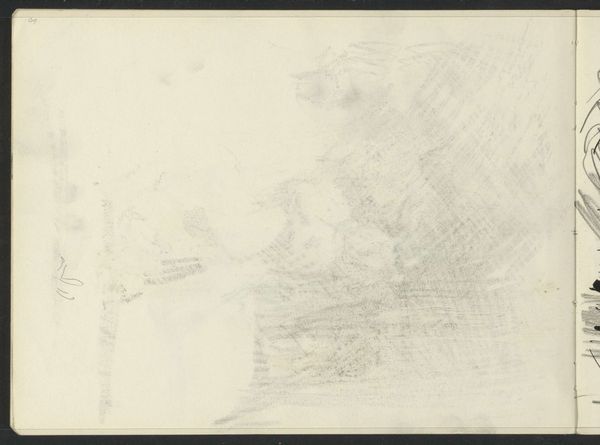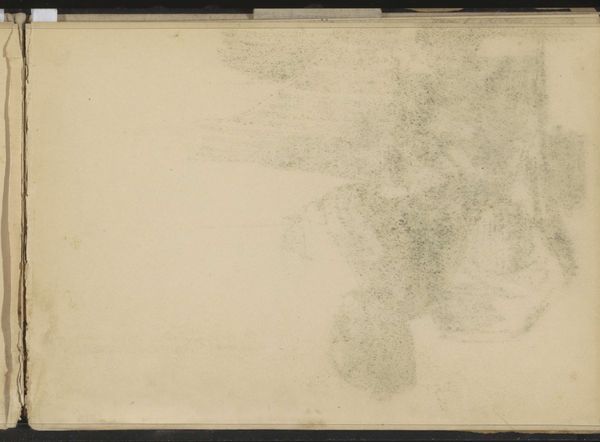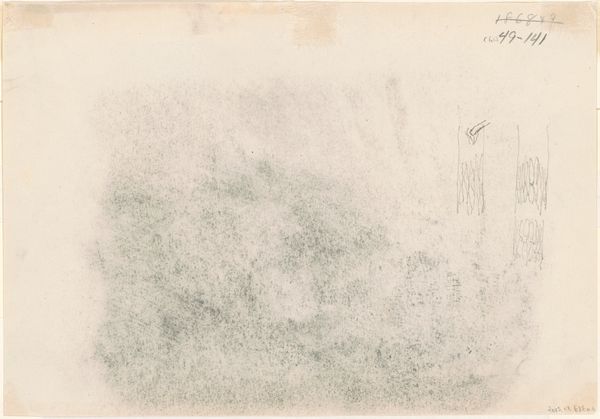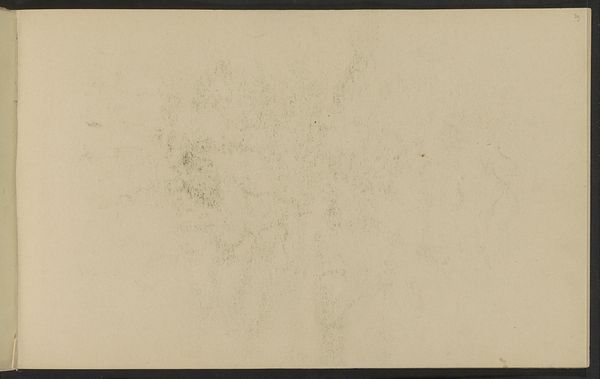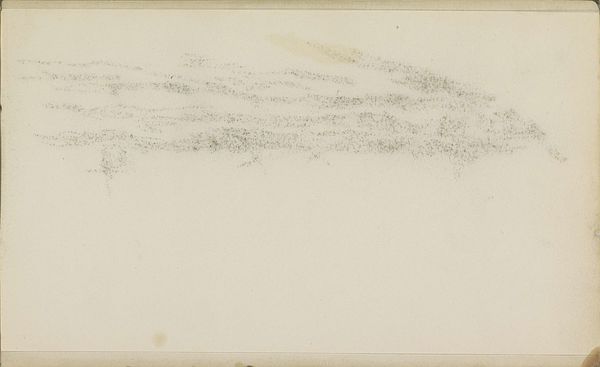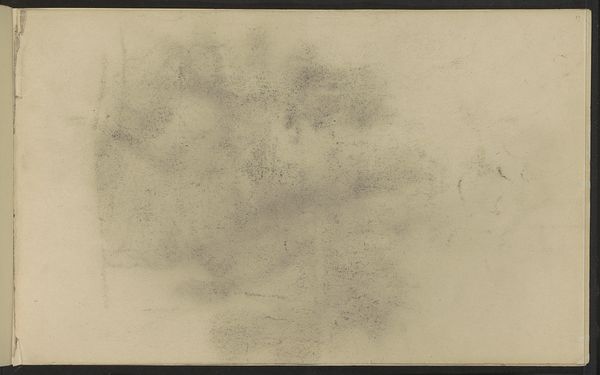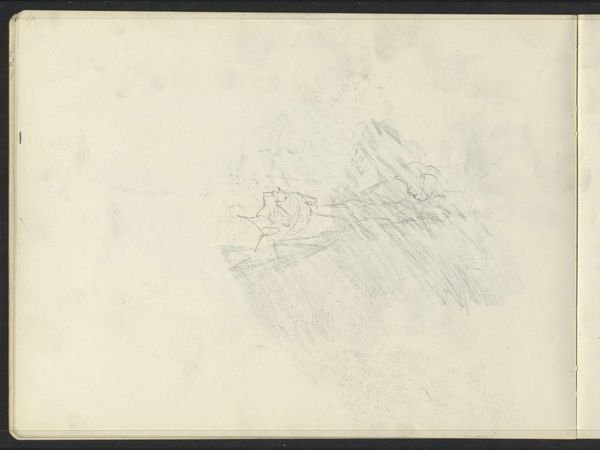
drawing, paper, pencil, graphite
#
portrait
#
pencil drawn
#
drawing
#
pencil sketch
#
paper
#
sketch
#
pencil
#
graphite
#
sketchbook drawing
#
monochrome
Copyright: Rijks Museum: Open Domain
Curator: Immediately I'm struck by its ephemeral quality, almost like a fading memory. It's haunting. Editor: You've hit on something. We’re looking at a work by Isaac Israels, made sometime between 1875 and 1934. It’s titled "Abklatsch van de krijttekening op blad 5 recto", a transfer of a chalk drawing on page 5, viewed from the front. It’s a drawing done in pencil and graphite on paper, currently held in the Rijksmuseum collection. Curator: That title makes perfect sense – it explains the blurry, almost dreamlike appearance. Knowing it's a transfer adds a layer of interpretation; we see not the original, but an echo. And given Israels’ interest in portraying contemporary life, one wonders what compelled him to preserve *this* particular image, this fleeting trace. Editor: Indeed. The reproductive nature of the print connects with broader themes circulating in the art world at that time. Photography’s rise was challenging traditional art forms to justify their societal position. Could drawings like this be seen as resisting the camera, perhaps? Curator: Perhaps. The sketch, particularly the rendering of what looks like a human figure, is obscured to the point of abstraction, resembling something half-remembered. Is this an attempt to portray the inherent flaws of human memory itself? Does it signify some other absence? Editor: That gets me thinking of what that could say about this moment in Dutch art history. Amsterdam Impressionism, for instance, of which Israels was part, celebrated the everyday and the fleeting moments of modern life, but there’s none of that in here. In this almost ghostly reproduction. Is this perhaps an accidental creation by the artist to take this particular work to a completely different symbolic domain? Curator: That could certainly be an alternate argument. The piece seems pregnant with interpretation, resisting any singular definitive meaning. Its monochrome palette enhances this sense of mystery. The transfer technique results in an almost smoky atmosphere which amplifies the symbolism, making the form feel like something unearthed from the past. Editor: I find myself intrigued by how an artist associated with capturing modern life produces something so ethereal, so resistant to easy interpretation. It really makes us reconsider Israels' wider practice. Curator: Agreed, seeing how that contrasts sharply with what is currently valued on the marketplace, perhaps our contemporary art institutions have made this piece obscure, maybe there is even a resistance to its inclusion in a much larger and more diverse art world. Editor: It's been very rewarding viewing this artwork together and has encouraged me to see a more layered perspective. Thanks. Curator: Indeed, thanks for the chat!
Comments
No comments
Be the first to comment and join the conversation on the ultimate creative platform.

